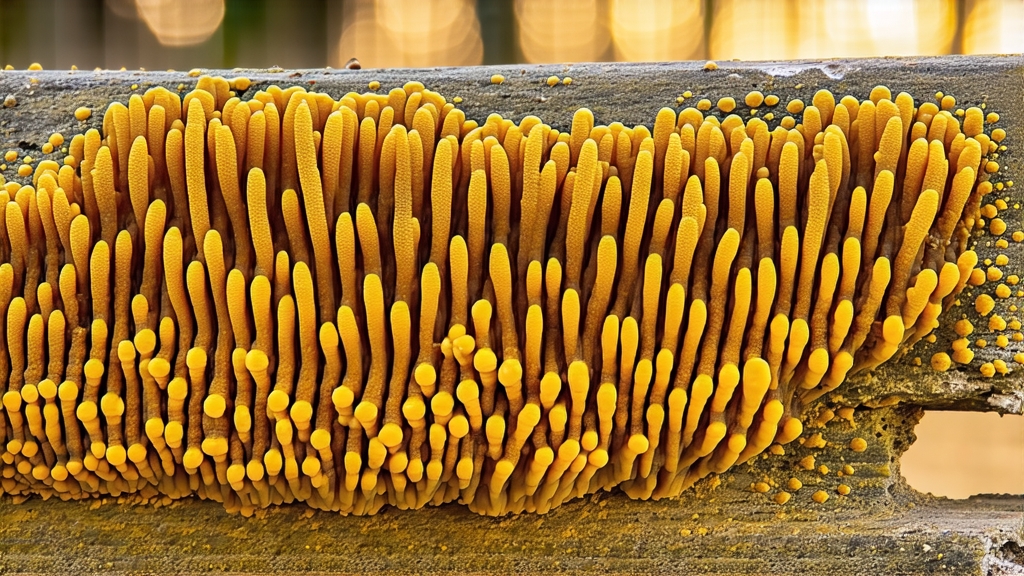
Tucked away in the mist-wrapped mountains of north-western Hunan, a tea has been quietly fermenting for more than six centuries. To the uninitiated it looks like a dusty grey brick, wrapped in rough straw matting and stamped with cryptic Chinese characters. Yet when the brick is cracked open it reveals a constellation of tiny golden grains—microscopic blossoms known as “golden flowers” (Eurotium cristatum)—and an aroma that marries damp forest floor with sweet fermented hay. This is Fu brick tea (Fú zhuān chá), the most microbiologically complex member of China’s dark tea (heicha) family and, arguably, the one most deserving of a place in the global tea lexicon.
-
From Frontier Barter to Imperial Tribute
The story begins in the Ming dynasty (1368-1644), when the imperial court needed a tea that could survive the 3,000-kilometre trek from the humid tea hills of Hunan to the arid horse markets of the north-west. Compressed leaf resisted spoilage, and the straw-wrapped bricks could be lashed to camel saddles without crumbling. By the Jiajing era (1522-66) the city of Jingyang, on the Xiang River, had become the official “Tea Bureau” where bricks were weighed, stamped and dispatched along the ancient Tea-Horse Road. Caravans traded them for Tibetan warhorses; monks carried them into lamaseries where the tea was boiled with yak butter and salt to create the calorie-rich beverage that still fuels Himalayan mornings. In 1839 the Daoguang emperor, plagued by indigestion after a banquet of roast mutton, was reportedly cured by a bowl of Fu brick infusion; the tea was duly elevated to tribute status, and the word “Fu” (meaning “blessing”) was carved into every brick as a talisman. -
The Terroir that Breeds Golden Flowers
True Fu brick can only be made in the 28°–30° N band where the Xiang, Zi and Yuan rivers converge. The soil is a purple sandy loam rich in selenium and zinc; summer humidity hovers at 85 %, creating the perfect incubator for the airborne spores of Eurotium cristatum. The leaf itself is a blend of late-picked Anhua Yun-Tai large-leaf cultivar and a small percentage of wild “mountain tea” (shan cha) that still grows on 300-year-old trees. After the first spring flush is diverted to green teas, farmers wait until the guyu rains have swollen the leaves, then pluck the 4th to 6th mature leaves plus a 5 cm stem—material too coarse for green tea but ideal for the microbial marathon ahead. -
Crafting a Living Brick
Fu brick production is a month-long choreography of moisture, heat and pressure that turns tea into a miniature ecosystem.
Step 1: Pan-Firing (Shāqīng)
Leaves are tossed in a 280 °C wok for 90 seconds—just long enough to kill the green enzymes while preserving the leaf’s waxy cuticle for future fungal colonisation.
Step 2: Rolling & Piling (RòuniÁn & Wòduī)
The bruised leaf is piled 70 cm deep under wet canvas for 12 hours. Temperature climbs to 55 °C, triggering non-enzymatic browning and the first wave of thermophilic bacteria.
Step 3: Stacking into “Golden Flower Rooms” (Fāhuā)
The half-fermented tea is steamed for 30 seconds, then packed into brick-shaped wooden molds lined with breathable cotton paper. The molds are wheeled into a humid attic known as the fāhuā fáng, where temperature is held at 28 °C and relative humidity at 75 %. Over the next 12–15 days Eurotium cristatum blooms, its golden hyphae weaving a 3-D lattice that exudes lipases and proteases. These enzymes clip long polyphenols into shorter, redder theaflavins and release rare amino acids such as γ-aminobutyric acid (GABA), giving Fu brick its trademark mellow sweetness and umami thickness.
Step 4: Drying & Maturation
Bricks are slowly dried at 45 °C for three days, then rested for a minimum of 90 days in ventilated warehouses. During this time the moisture gradient equalises, the straw binding